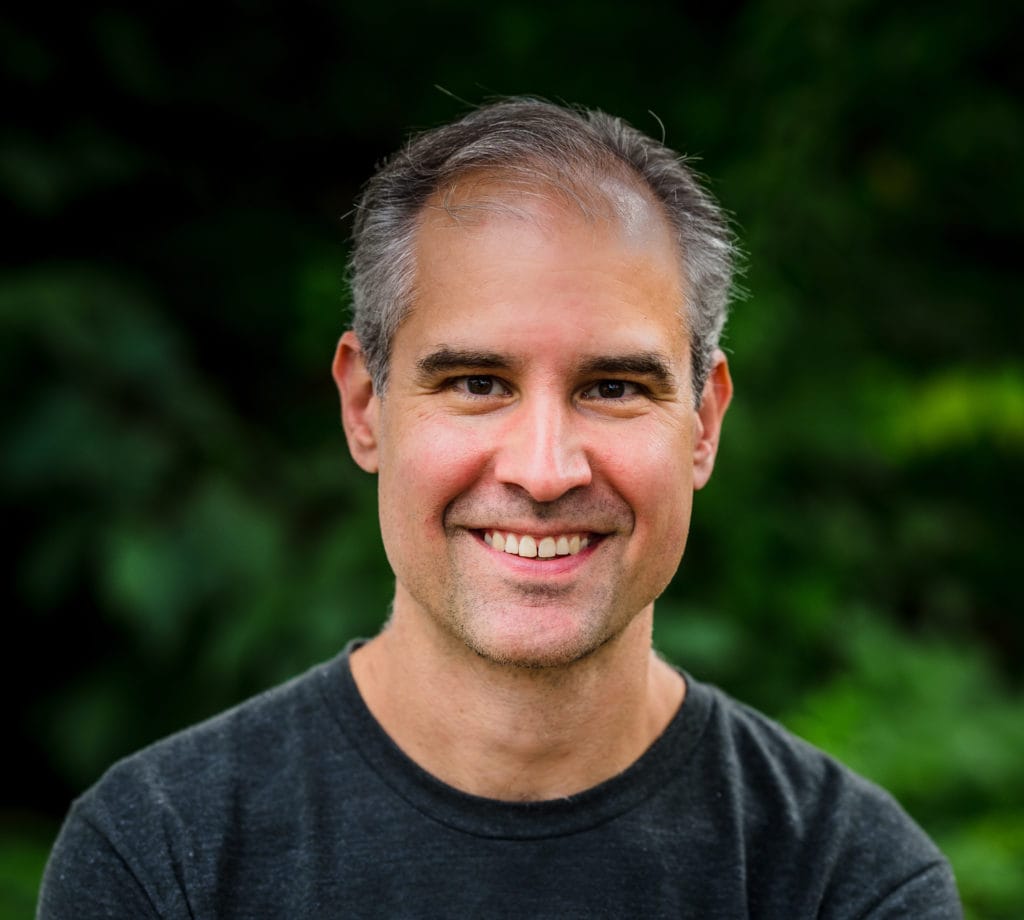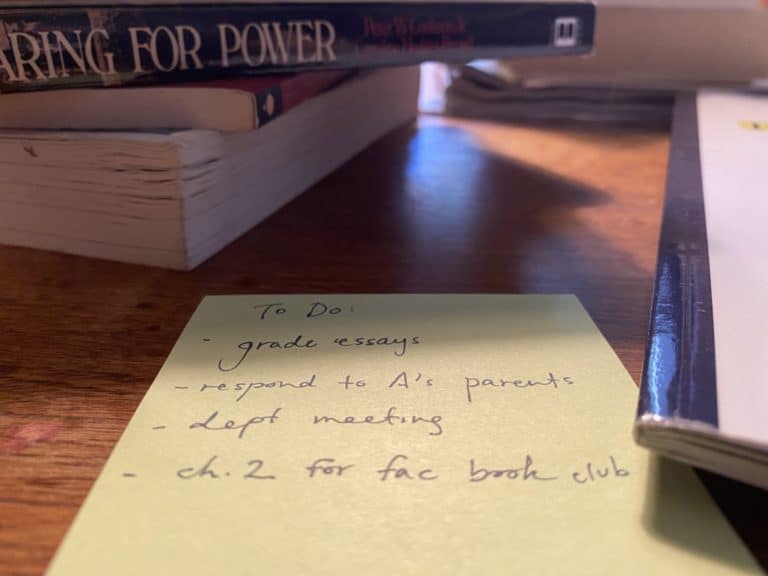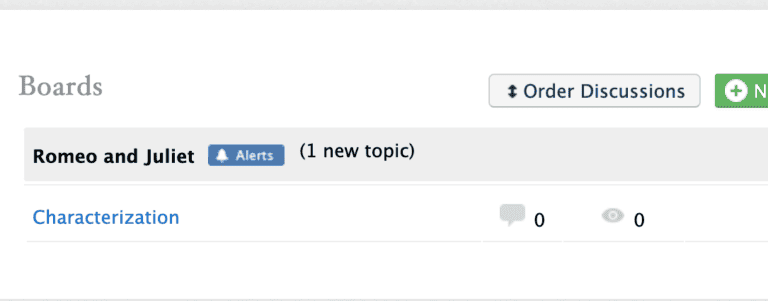Office Hours: 30 minutes with Michael Horn
Michael Horn speaks and writes about the future of education and works with a portfolio of education organizations to improve the life of each and every student. You can learn more about his work, and find his books, on his website.

First, we’d love a chance to know about your background and how you came to your current work (speaking and writing about Education). When did your interest in Education emerge, and what have been some core experiences in the development of your current practice?
I got into this field totally by accident. I had a Public Policy and writing background, and I went to business school to get away from both. Either I failed to escape or what I was really meant to do was ignited in me while I was at business school. What really helped me to see this purpose was a class I took with Clay Christensen, who is considered the “father of disruptive innovation theory.” He was writing a book about applying his ideas to public education, and he gave me the opportunity to coauthor it with him. His class totally transformed how I saw the world, and so I leapt at the opportunity to do the book. Two years later, the book came out and we founded the Christenson Institute, a nonprofit. Over 15 years later, I’m still doing this work in education, specifically thinking about how we can help every person to build their passions and fulfill their potential. The work fuels me.
I’m a podcast lover, and I recently took the chance to listen to some episodes of one of your podcasts, Class Disrupted (with Dianne Tavener). I know you’ve been thinking about meritocracy and education. When you think on a teacher level (most of our readers are teachers), what can or should teachers do to rethink the way that we talk about and assess merit in our classrooms?
The first thing to do is step back and recognize that the way schools function isn’t preordained. It doesn’t have to be this way. The way school is structured now forces teachers to make distinctions between students and sort them into pathways and tracks. That conflicts with what we know about human development, that people have jagged profiles, different strengths and weaknesses. To judge them with some finality is the opposite of the growth mindset that most teachers want to build. So, what can teachers do with that tension?
One move to make is to step away from the model of the whole class of students always operating in lock-step. Instead, maybe you could flip the classroom to use class time for discussion and homework time for individual work where you need it. Or you could do something more complex, moving to a mastery based learning model where students move on as they master and the role of the teacher is to coach and motivate and guide. We need to think about our time in the classroom: how do we really use the time that we’re given to best meet each student with what’s really going to engage them?
When teaching online during the pandemic, I and other teachers really started to zero in on the value of class time. You really have to do in class what you can only do when gathered together.
It all connects back to this question: “what’s the purpose of what we’re doing and the modalities we’re using?” Really starting each class intentionally, planning lessons, beginning with the end in mind can help to build that intention. But then it’s also important to ask: how would I know if students had really realized the outcome that I intended? That’s where assessments fit in, to help inform the teacher of the success of their work.
At REAL, we focus on discussion, which isn’t necessarily an innovative technology or tool. We do, however, believe that thoughtfully teaching discussion skills in the classroom is an innovative approach to a familiar tool . How can teachers innovate using what’s already familiar to them? Does it count as innovation to rework what we already know?
To me, innovation in education is anything that helps learners make progress that wasn’t being done before. It doesn’t have to involve technology, and it doesn’t have to involve a newfangled design. In many cases innovation can mean executing something more purposefully and deliberately to produce enormous gains. I buy into this idea that if you’re purposeful in structuring a conversation and a discussion, you can see real learning gains from it. It’s not about creating something new, but something better.
It’s useful for teachers to reflect on their own times as students. How many times were you in a discussion in English class where the discussion was interesting but you had no idea what you got from the discussion and what you’re supposed to take out of it? That happened to me all the time in business school. The environment was not structured and scaffolded in a way that would help me to know what we were trying to achieve and this is how we have the conversation. What I take from REAL is that we can make these discussions the valuable asset that we know they can be by layering in intention and purpose.
Even if a teacher intends for students to have open-ended exploration, that teacher also needs to have directions for both themselves and their students.
Let’s think about this through another example: teamwork and team activities are very fashionable. If a teacher hasn’t structured that environment so that students know how to assign roles, or manage a meeting, or productively collaborate, then they’re often setting students up for the freerider problem. Frustration can be productive, but there has to be some reflective practice on the other side built in to start learning more about how to work effectively as a team. And the same thing applies to individual work: busy work for its own sake isn’t useful unless it takes us in the right direction. Being deliberate and setting students up to succeed and find the takeaway, even if that takeaway is not proscriptive, is important. Every student wants to feel successful, and in order for that feeling to take root, they need to know what success would be.
Sometimes, kids even lean on extracurricular activities – sports, chess, robotics – to get that feeling of success because they don’t find it in the classroom.
The fact that we call extracurriculars “extra” is wild. We could take the values from those extracurriculars and bring them into the core curriculum to build and enhance motivation there. Traditional school experience is structured in a way that doesn’t always help kids to find genuine feelings of progress and success. I’ve never thought of this before, but while external approval is important, if you don’t feel it and understand why, that feeling isn’t going to be helpful. In your future life, you can only determine the quality of your own work, you can’t always determine how other people are going to respond. That’s a life skill that we need students to learn in school. I can’t control how people will react when they read my book. What I can control is what I’m writing and how and under what time. I need to know how to say that I’ve done a good job without that approval.
You specialize in innovation in education, and lately, it seems like all kinds of groups and schools are working to innovate. At the same time, some of those innovations or new programs seem to serve factionalization (or separation between groups, especially in a political sense). What’s the difference, in schools, between innovation and factionalization? How can we distinguish between the two and move toward innovation?
This is the topic of the conclusion of my book, where I wrestle with it deeply. One of the things I’ve concluded is that we might have to separate some in order to make progress for all. I reach that conclusion grudgingly. Just look at the fights in districts over anything and everything. The ability to make progress toward mastery based learning or student success or the chance to collaborate can’t happen right now because the oxygen is getting sucked up by battling factions. A core lesson from innovation is that when no one agrees on the outcomes or how you get there, the only tools available for a leader are power tools (hiring and firing, fiat, other brutal tools). You don’t want to use these in public school settings, even if they’re available. The only tool you have to make progress is the tool of separation. I don’t think that’s an end state. I think that if you can separate and prove success, families and students want to join. To me, it’s a short-term move to build a base. Starting small with a group of people and building success can be incredibly healthy, actually.
Sadly, we’re an incredibly factionalized, segregating population as it is. In some ways, I think that it might overstate how well we’re doing to think about less separation. A more deliberate crafting of innovation may require separation initially.
I don’t think anything is innovative unless it’s actually benefiting and helping students make progress. If it’s not helping, it’s not innovation. The Prius was an innovation because it helped a lot of people make progress toward electric cars; the Segway was an invention, but it didn’t really help people.
Sometimes, new tools or practices that aren’t innovative appeal to schools because they can represent innovation, but it sounds like something truly innovative would require a school to transform.
Private schools suffer with the innovator’s dilemma, which is that if you do anything radically different, it’s hard to build momentum and approval. Innovation upsets the grain and disturbs what’s made a private school successful up to this point. Many independent schools have incredible resources and histories, and they really struggle to do radical things.
You speak all the time about the future of education, and so we’ll narrow down our final question. What is a prediction that you have for the practice of teaching in the future?
I think that because of all the pressures in the workforce and in schools, we’re going to have to find ways to make teaching more motivating and more sustainable. That will mean that more schools will figure out ways for teachers to genuinely work with other teachers in co-teaching, team environments. I don’t think that, without that, this will be a sustainable profession. More and more people want and need that flexibility. If someone needs to care for their kids one day and be absent, all these kids fall through the cracks and parents are angry and it’s not sustainable.





